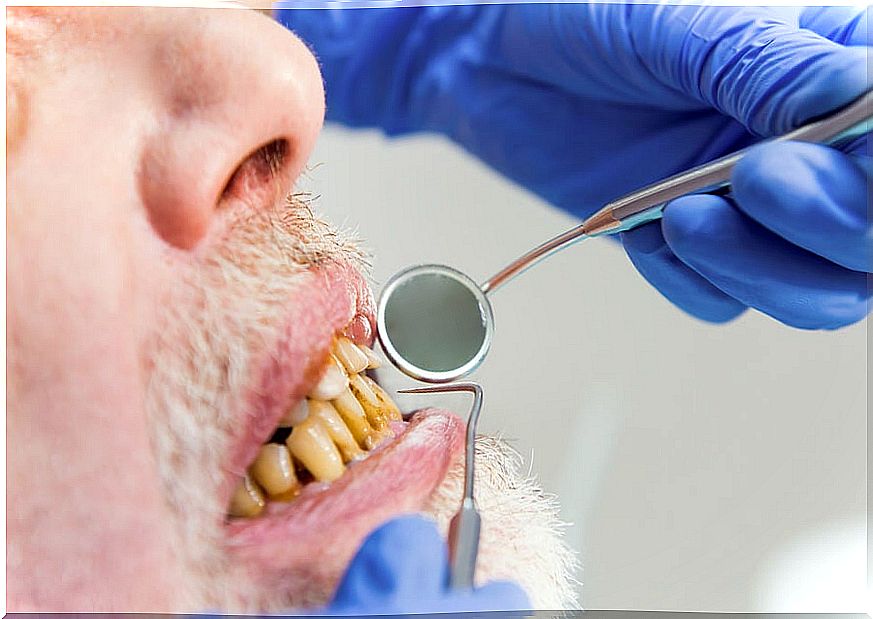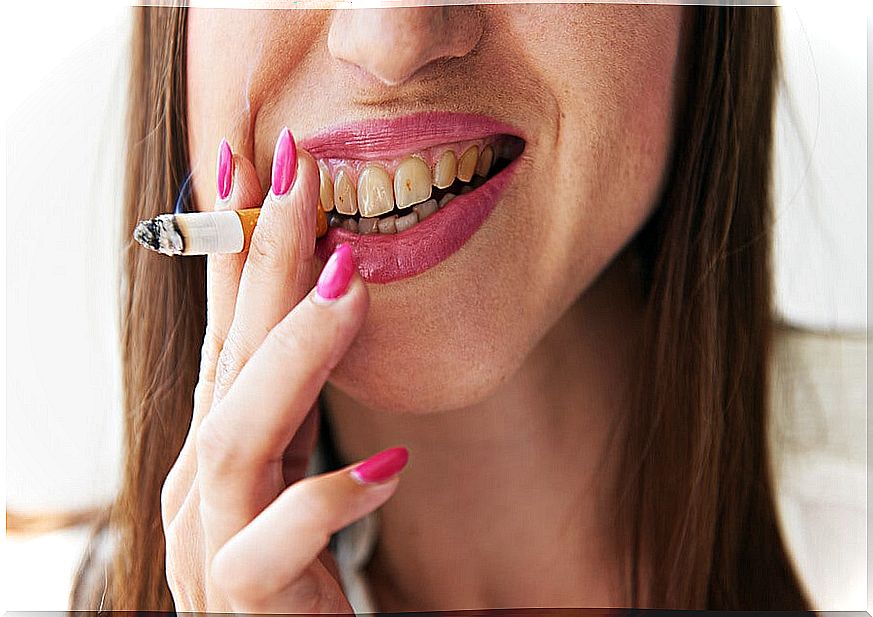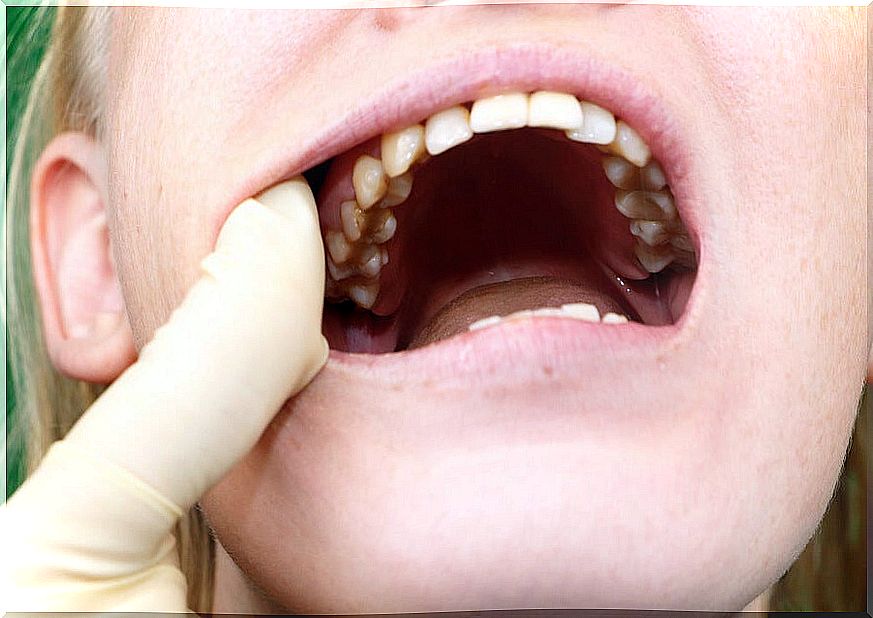Damages From Tobacco In The Oral Cavity
It is scientifically proven that tobacco use produces an increased risk of oral cancer, oral lesions and periodontal diseases. Read on to learn about other damages of this harmful habit.

In the habit of smoking, the first place where this drug comes into contact with the body is the mouth. Therefore, its manifestations in it are going to be more than evident. Tobacco causes numerous damages at the level of the oral cavity, which we invite you to know below.
Just by looking at the teeth of any patient, a professional is able to distinguish with the naked eye if they are a smoker or not. Due to these serious and harmful consequences, one of your main goals will be to prevent or reduce, as far as possible, the smoking habit of your patients.
Oral manifestations in smokers
According to a study published by the Iranian Journal of Public Health that examined the harms of tobacco in passive smokers, the oral manifestations in smoking patients can vary from one to another. Of course, the aforementioned effects for passive smokers apply — and are even enhanced — in those who do smoke.
In general, there are certain alterations that, beyond the aesthetic, compromise health. Here are the most important ones:
- Stains and stains on the surface of teeth, as detailed in a WebMD post.
- Wrinkles on the skin, according to a study published by Experimental Dermatology .
- Bad breath.
- Alterations in the composition and in the amount of saliva produced. This, according to a study published by the Shiraz University Journal of Dentistry , exponentially increases the risk of oral cancer.
- Increased risk of developing oral yeast infection, according to a study published in the Chonnam Medical Journal .
- Stains on the cheeks, gums and palate.
On the other hand, research published by the Journal of Wound Ostomy & Continence Nursing details that people who quit smoking experience benefits such as the following :
- Recovery of the ability to taste.
- Improvement in the wound healing process and its speed.
- Lower risk of periodontitis and gingivitis.
Harms of tobacco to oral health
As if the aforementioned consequences were not enough, we are going to delve a little deeper into the damages of tobacco and the enormous risk they pose to health.
1. Dental aesthetics

In most smokers we see yellowish and brownish stains on teeth, dentures and restorations. These stains can be removed with certain methods that the dentist can indicate, such as an ultrasound cleaning. It is also common to have brown spots on the gums.
2. Smell and taste
In smokers, both the sense of smell and taste are dissipated by tobacco. Although it may seem like a minor issue, this implies that, for example, a smoker will need to add more salt to food to feel its flavor.
This excessive salt intake can lead, as detailed in a Medline Plus article, to increased blood pressure and fluid retention. In turn, these two problems can lead to much more serious pathologies.
3. Wound healing
There are studies, such as the one from the Journal of Wound Ostomy & Continence Nursing that we cited earlier, that directly link tobacco use with delayed wound healing, greater postoperative pain, and increased risk of infections. This is because tobacco produces vasoconstriction, thereby reducing blood flow to the wound.
4. Periodontal diseases
Smoking patients are at much higher risk of periodontitis, which can affect the health of the gums, ligaments, bones, and periodontal pockets of the oral cavity. This also carries a higher risk of losing teeth from it.
5. Dental implants
The aforementioned studies affirm that smoking seriously impairs the success of dental implants, both in the short term in the integration of the implant with the bone, and in the long term, thus reducing their half-life.
To increase the likelihood of implant success, a study published by the Journal of International Society of Preveventive and Community Dentistry suggests quitting smoking one week before implant placement and avoiding smoking for up to eight weeks afterward.
6. Oral cancer

As confirmed by the cited research, the relationship between tobacco and oral cancer is scientifically proven. Also, the combination of tobacco with alcohol and other unhealthy lifestyle habits exponentially increases this risk.
7. Smoker’s melanosis
Tobacco pigments the oral mucosa and gums, causing brown spots. The stains are generally not malignant and disappear within about a year after quitting.
8. Effects on saliva
The saliva of smokers contains substances present in tobacco smoke, which are potentially carcinogenic according to a publication in the Journal of Dentistry . A higher concentration of bacteria that predispose to dental caries, such as Streptococcus mutans , has also been observed .
9. Caries
There is a direct relationship between smoking and tooth loss. This relationship may be due to both periodontitis and the increase in cariogenic bacteria in saliva, which increase the overall risk of cavities.
For your health, avoid the damages of tobacco
Tobacco causes numerous damages in the oral cavity, without forgetting all those problems and pathologies that it can cause at the level of health in general. These include cardiovascular pathologies, lung diseases, aneurysms, heart attacks, among others.
Beyond its addictive part and the damage caused to passive smokers by inhaling the smoke, it is scientifically proven that it produces an increased risk of oral cancer, oral lesions and periodontal diseases.
The best technique to avoid all these problems is prevention. Avoiding starting smoking, as well as eliminating the habit in people already addicted, are fundamental measures to maintain good health in many aspects.









